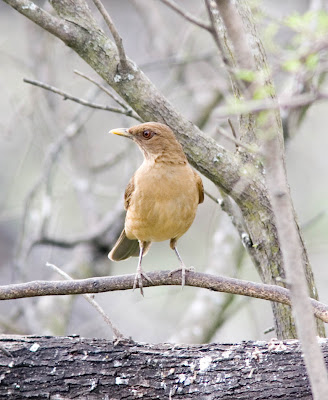
About three weeks ago, Charleston received a good 8" plus snow, so we put on our Carharts and went 4-wheeling. On a portion of the farmland that we own, there is a farm lane that runs along a ridge and looks down on a large amount of bottom ground that we farm. In the past few days, we noticed that as we drove up to the highest point on the little ridge, we had scared a bird from a tree in the same location several times. It didn't look like a hawk so we thought possibly it could be an owl. Diane soon located the nest high in a tree that was rooted at the base of the ridge at the edge of the farm field. The next day, we cautiosly approached and sure enough, a Great Horned Owl was sitting on a large bunch of sticks with snow hanging from the sides. Great Horned Owls usually don't build their own nest but use old hawk nests, cavities or other animal nests. In Coles County, these owls are the first birds to mate and have young. We were adviced by friends to not scare her from the nest by our presence too much, especially when it is cold. Today was my first chance to get a photo of one adult and one owlet. There are two owlets in the nest, but the other one was evidently taking a snooze. We are so pleased that the owl family is nesting on our farm and that we have habitat that is suitable. If you look at the lower left part of the nest, you can see the furry remains of a meal. Male owls will bring food to the nest as much as ten times a day. It will be so fun to watch them grow, but we are going to try and not be intrusive either. Stay tuned for more photos!!









